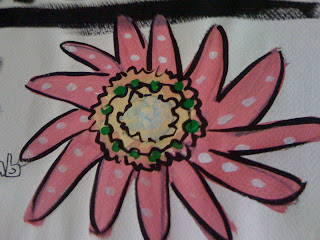Friday, September 17, 2010
Unit 2: How To Disintermediate The Department of Redundancy Department
Tuesday, August 31, 2010
IRLS 675: Unit 1: A Forming Digital Collection
Wednesday, August 11, 2010
Unit 10 SQL!!

I am still having trouble with SQL and in some ways this has been where the course stopped for me and I lingered far too long. As I write this I am still working on writing my query assignment (like this blog, very late) for the Unit 10 drop box and I have taken far too long to ask for help.
Unit 11 Learning Styles
If my undergrad was learning to learn, my master’s seems to have become learning to learn online, or learning to learn 2.0.
I am astonished to find in 672 that I am drawn to the practical so strongly in opposition to the theoretical, if I may toss these fuzzy terms into opposition for the sake of simple communication.
At the beginning of this course I had one week's exposure to HTML and MySQL, zero knowledge of the CLI and Linux, no knowledge of what the words "open source" really meant nor what a server was exactly, and, last but not least, was extremely nervous in general concerning technology. So, one can imagine what attempting to set up a demo system implementing the LAMP architecture has meant to some one like me, or can you?
Well, that is why I mention the practical in opposition to the theoretical above. I have been keeping learning style notes during this class and all was going well until some outside factors overwhelmed my life for a few weeks. I describe the learning flow previous to this as laminar and the result turbulence (hydrology metaphors concerning flows).
Laminar works great for the course style with me but any turbulence creates a situation where I feel as though I need to tweak the course to my personal circumstances. I was pleased by the sudden appearance of the last 4 or 5 units all at once in the final weeks of the course. This allowed me to attempt to recover from turbulence by adjustments, troubleshooting my learning methods and study habits ...
As I write this I am woefully behind so one can judge the success of my learning style in this course, but for delving into a topic I am so new to I feel that this course has been a success for me personally. Academically, I would be happy with a passing grade but I knew that my grades would probably take a hit by immersing myself in my own digital summer but I am very gratified by the results. I know, as Marisa Hudspeth mentioned today in one of the final discussion posts of the course when she referred to knowing what a "LAMP stack" was when one was mentioned at a meeting, that I have come such a long way. I can now ask even better questions at the 24/7 support center here on the U of A campus, for instance!
Unit 12 Value!

This is my post for Unit 12, the final unit of IRLS Applied Technology. I was struck during the reading concerning (technology) project planning this week by the difficulty of measuring what I have heard some economists refer to as "economic opportunity" cost (see Unit 8 blog post for more on this). That is, weighing into your calculations the cost of the opportunities occluded by implementing one plan path as opposed to another. In the reading for this Unit I was pleased to see librarians taking opportunity cost seriously in regards to digital collections. This seems especially important in light of the overwhelming need and the equally overwhelming lack of funding and resources to "get everything online" as fast and as best as we can. It should only take a couple decades or centuries or ... ?


